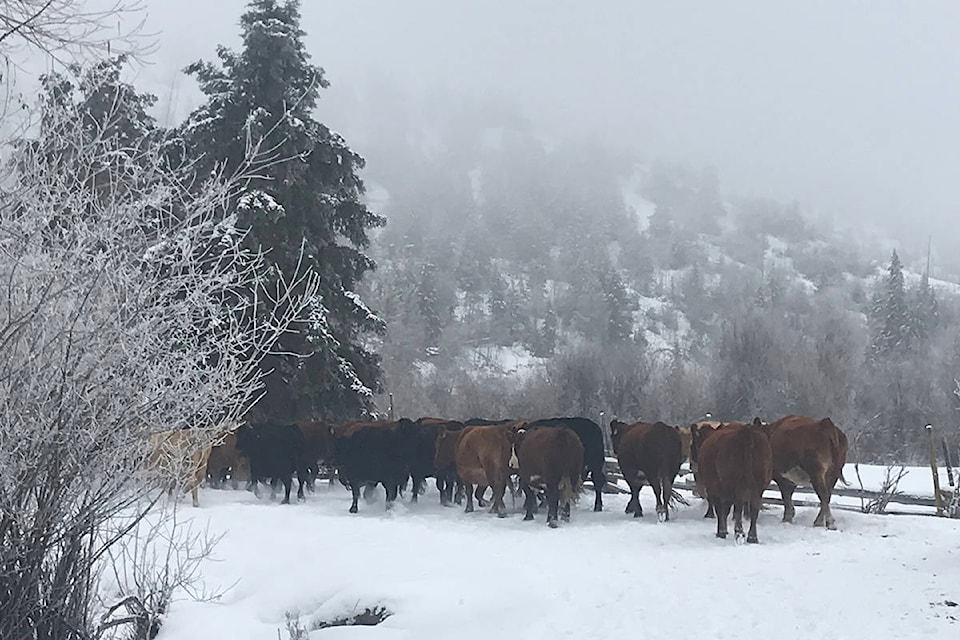David Zirnhelt
Observer Contributor
I have been thinking about some specific things as we go into winter on the ranch. Many of us are short of hay, so we are looking, or have looked at, our options and have priced them out.
Over the years, there have been some “protein lick tubs” developed, and the Co-op in Quesnel carries the product.
These tubs feed the bugs (bacteria) in the rumen of the livestock, which in turn digest the tougher part of the “roughage” we have on hand — hay or standing pasture.
Simply put, we need to know there is a balance of carbohydrates for energy (body function and keeping warm) and protein, which is necessary for growth and important functions like nurturing the fetus in the mother cow.
Short of testing the pasture and hay, one can get general guidance about what is in the feeds you provide to the animals.
For instance, our local knowledge about grazing cattle on natural meadows says that early in pregnancy, they should do well, at least into January. Unless highly fertilized, all the macro-nutrients and micro-nutrients should be there.
One might send in some samples and get the analysis, so you know about your specific pastures.
Now we have the supplements to place out in those fields.
Several years ago, when we started to extend our grazing season and calve later, we grazed cattle in mature Reed’s Canary and wild sedges in the wetter areas, which we couldn’t access earlier in the fall because it was too wet. This is mostly willow bottom riparian ground.
Advisors in the Ministry of Agriculture said that if the cows can eat willow, there should be enough protein to digest the “rank” Reed’s grass, which grows to seven feet tall, held up by the willows. In other words, it is accessible to the cows.
Research that I have read says that if the cow can get a good mouthful of the feed without burying their eyes, then they can follow the grass under the snow. We have successfully grazed these voluminous pastures well past Christmas.
Cows that are suited to and/or habituated to this kind of feed can do well. We routinely use the protein supplement, which is much cheaper than providing a full hay or silage diet.
If you are thinking of reducing your herd, you may wish to replace them with genetics that can adapt to the extended grazing strategy approach. After all, about 65 per cent of the cost of keeping a cow is feed costs. A dollar saved is a dollar earned.
David Zirnhelt is a rancher and member of the Cariboo Cattlemen’s Association. He is also chair of the Advisory Committee for the Applied Sustainable Ranching Program at Thompson Rivers University Williams Lake.
READ MORE: Ranch Musings: Young people and the business of ranching
editor@quesnelobserver.com
Like us on Facebook and follow us on Twitter
